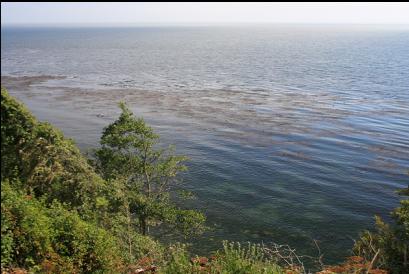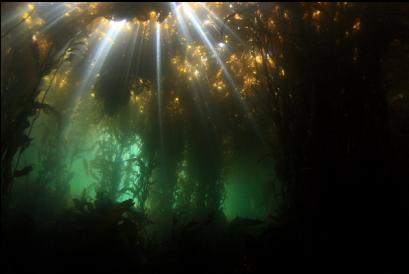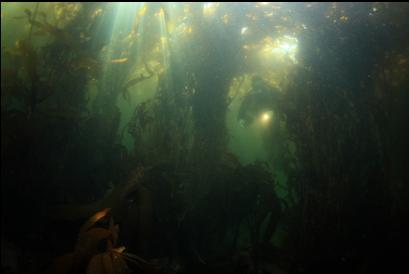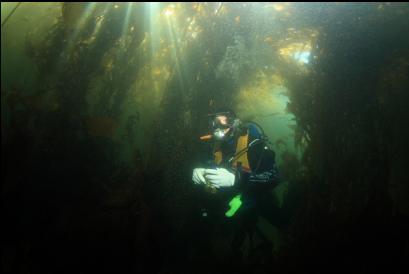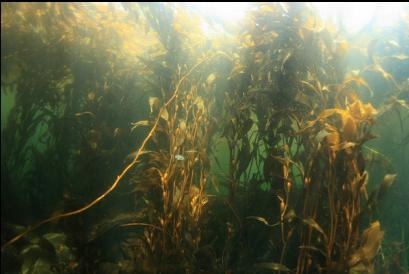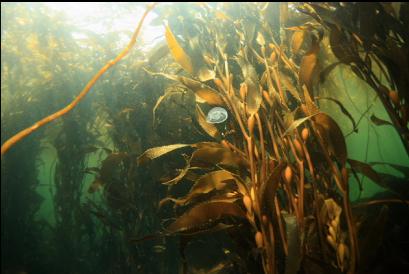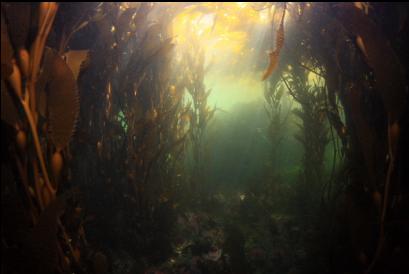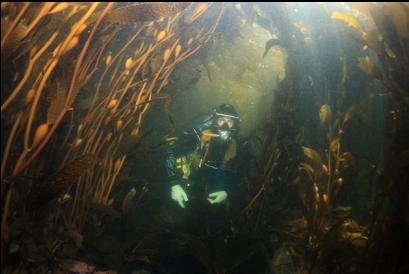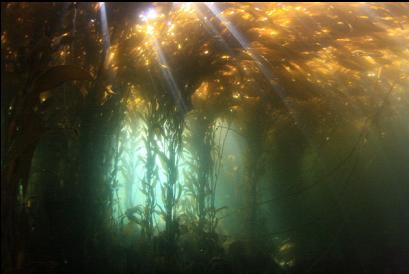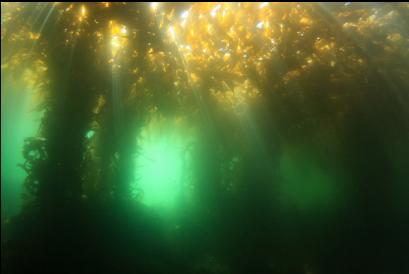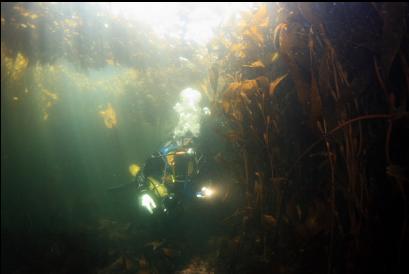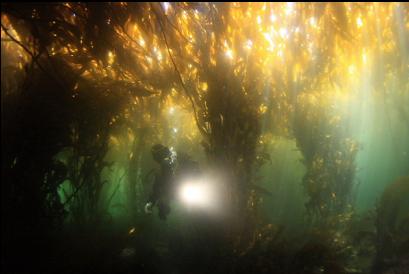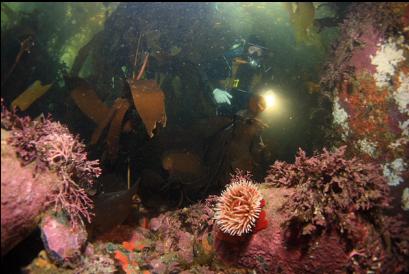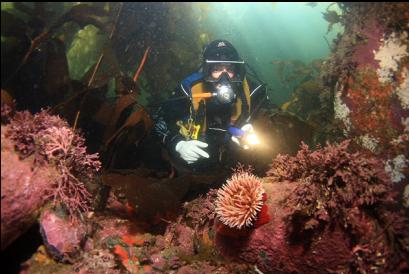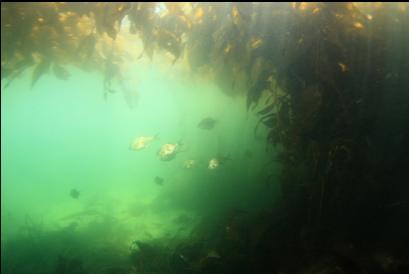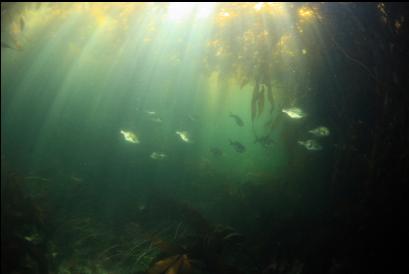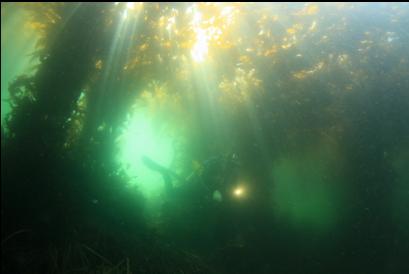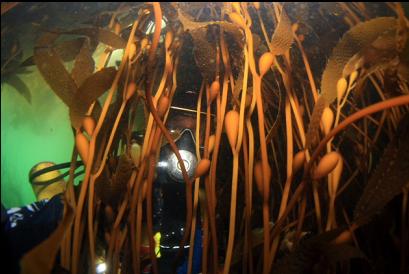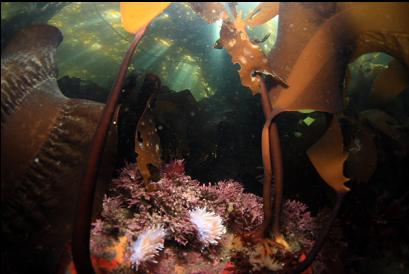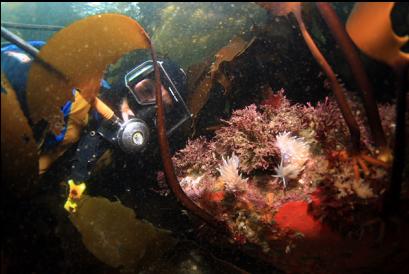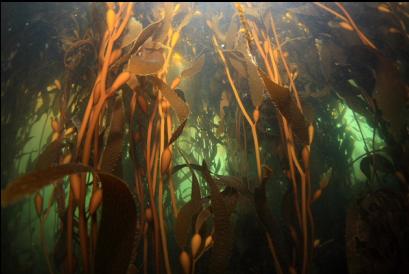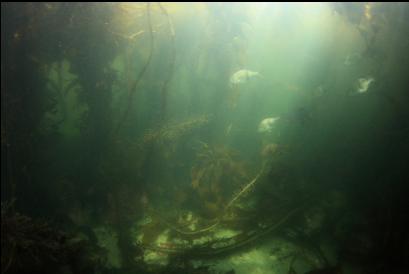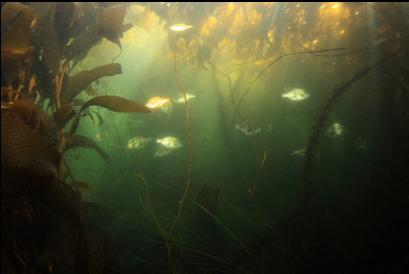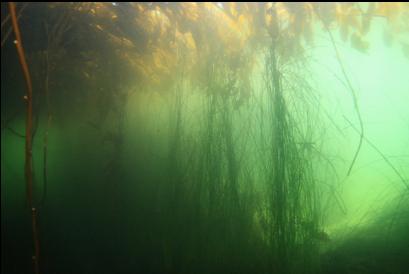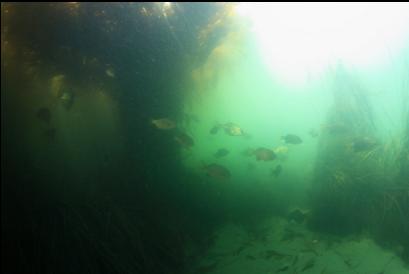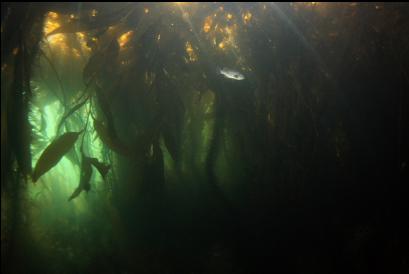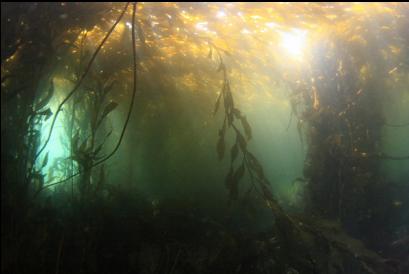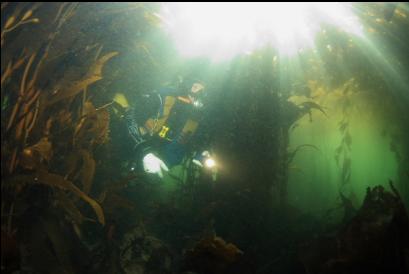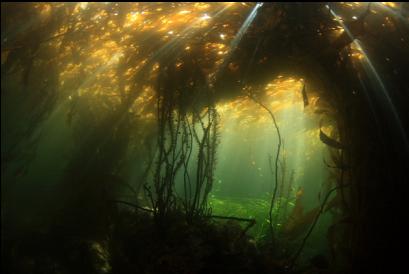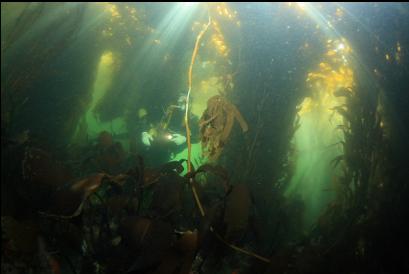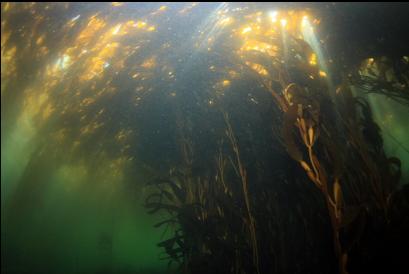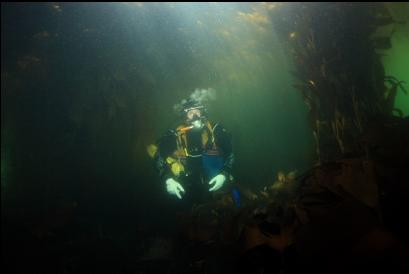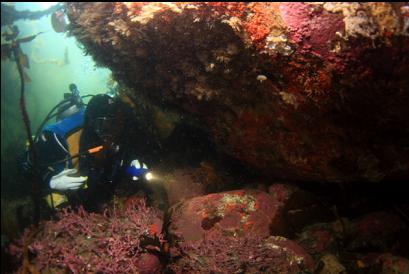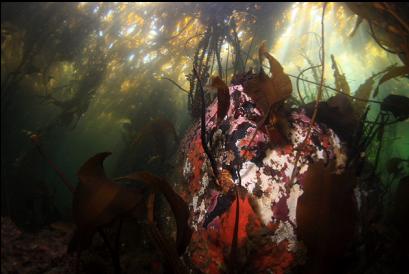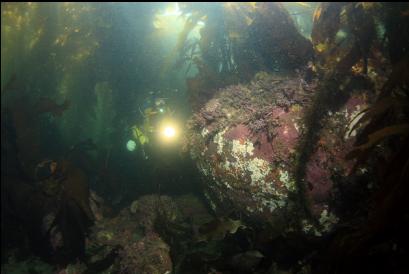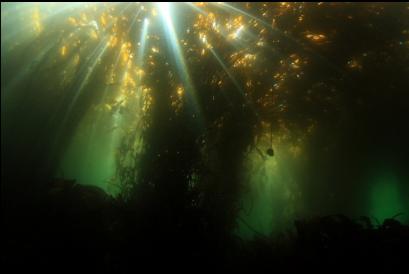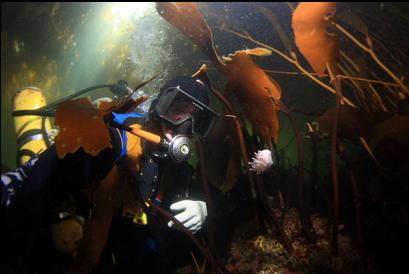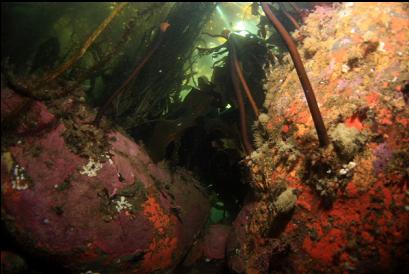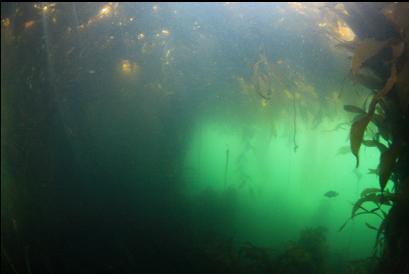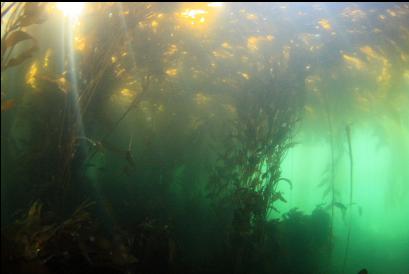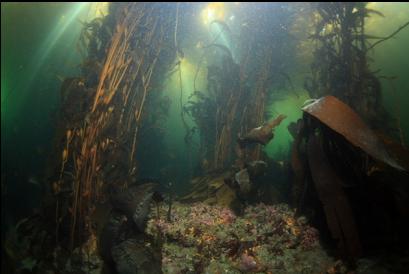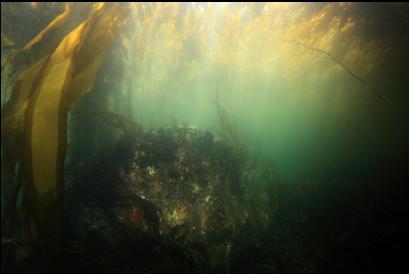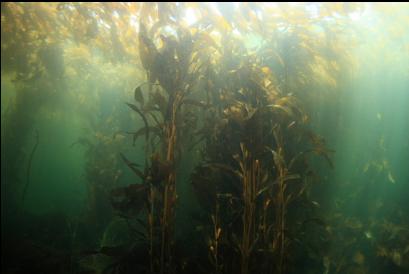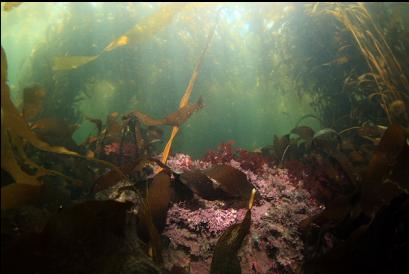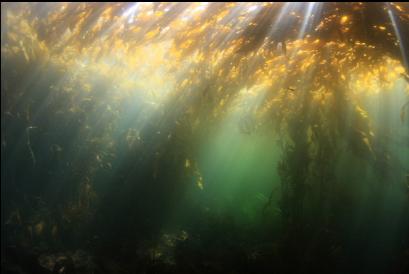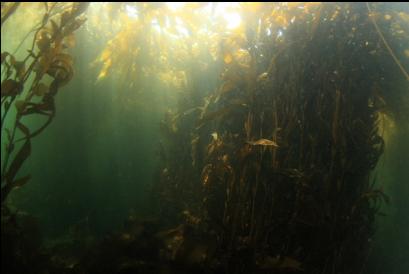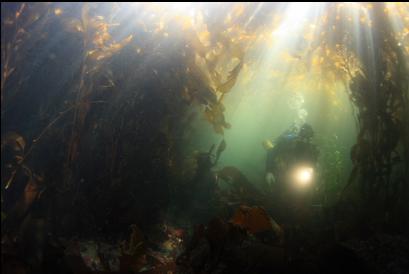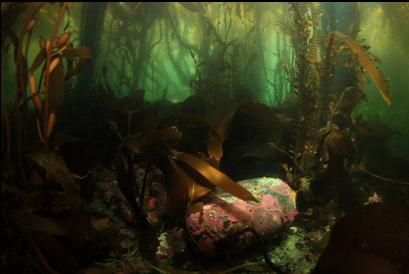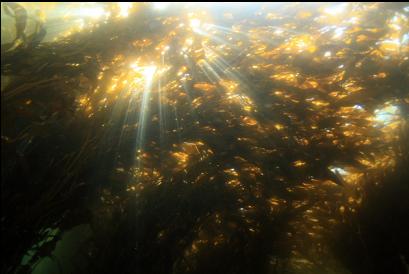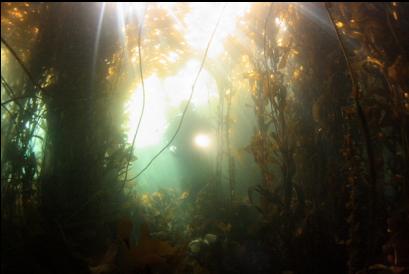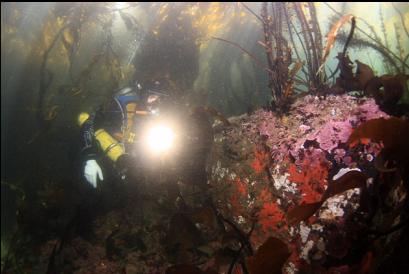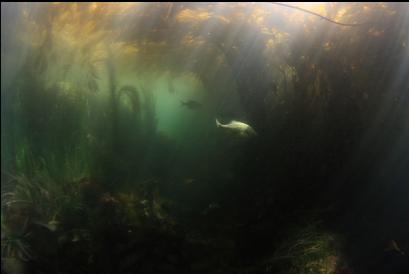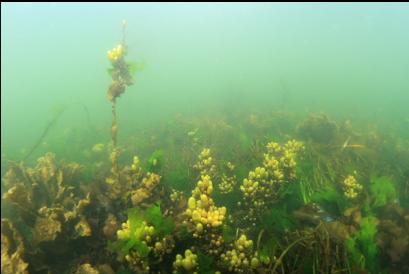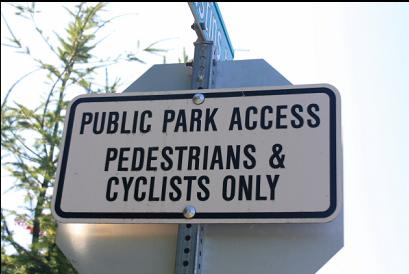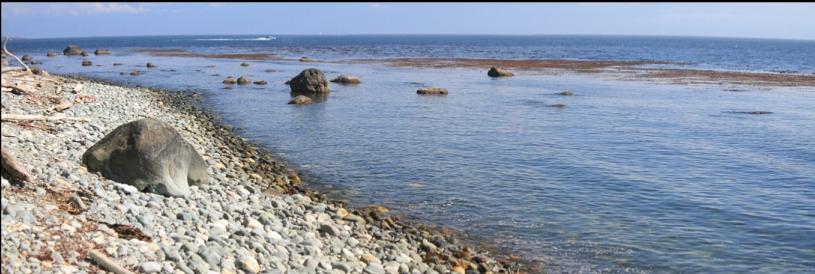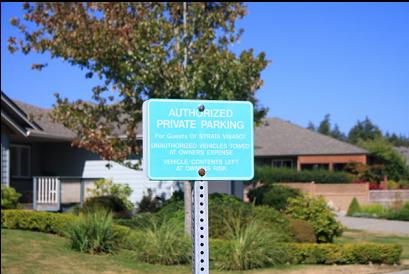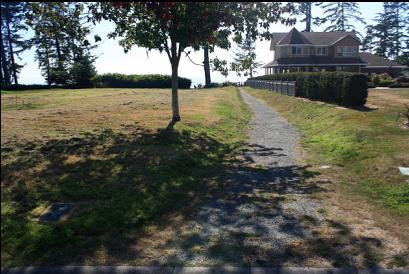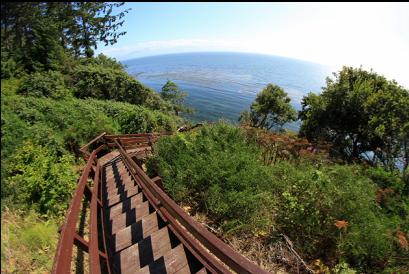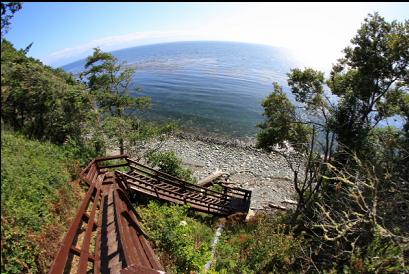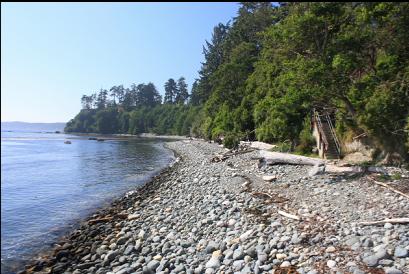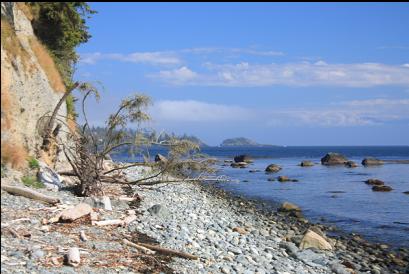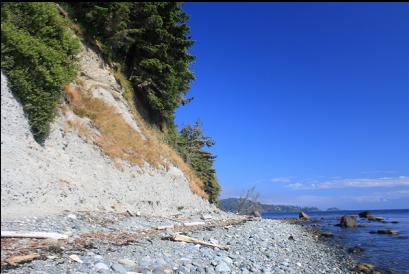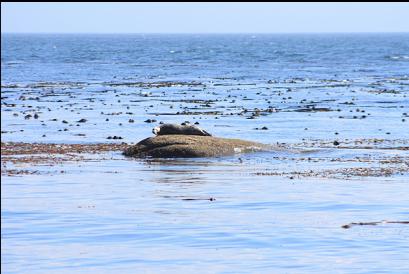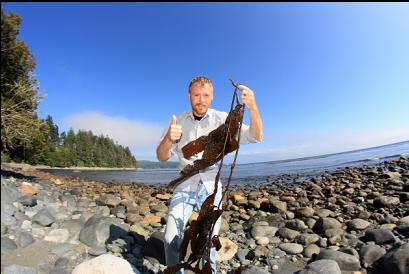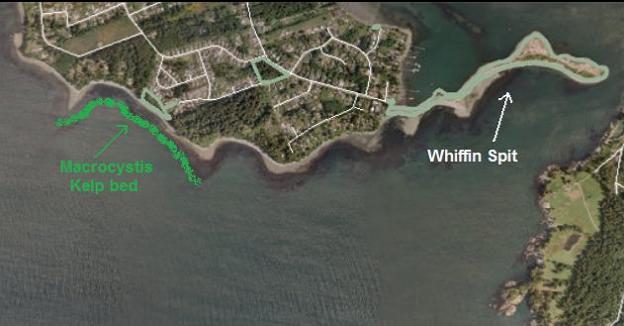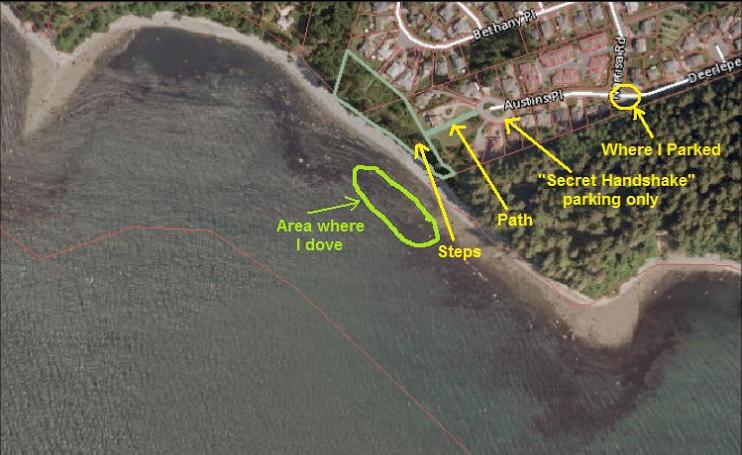Most of the kelp forests that we're familiar with here in British Columbia are made up of bull kelp (Nerocystis). When non-locals picture kelp forests, they are probably thinking of the giant kelp off California (Macrocystis Pyrifera). We have a species of Macrocystis up here too (Macrocystis Integrifolia). I've always called both species "Giant Kelp", but according to Wikipedia, the common name for our Integrifolia is "Great Kelp". Macrocystis Integrifolia looks pretty much the same as Pyrifera (to me anyway), but it lives much shallower. It's usually found near the open ocean off the West Coast of Vancouver Island. I've seen a few strands of it here and there in the Strait of Juan de Fuca, which I thought was pretty exciting. Recently, on my way home from another dive, I stopped at Sooke Bluffs Park. I wasn't really thinking of diving. I just wanted to see the view. There's a steep set of steps leading down a cliff to a pebble beach. As I was walking down the steps, I noticed a large mat of something floating on the surface just offshore from the beach. At first I thought it was just ripped up rockweed and other floating junk brought in by the tides and wind. When I reached the beach, I could see that it was some kind of kelp. The biology nerd in me was getting excited, but I told myself that it was probably just feather boa kelp. I could see the floating band about 50 meters offshore stretching in both directions for the entire length of the beach. I optimistically started to hunt around on the beach for washed up Macrocystis kelp. Eventually I found a few piles of it on the beach, but I didn't do a dance because the rocks were slippery. I was now pretty sure that sprawling out in front of me was a kilometer-long forest of Macrocystis kelp. Of course I came back 2 days later (July 29, 2011) with a full tank and a camera. The park is accessed off Austins Place. The problem is that the new subdivision here is strata and the locals must have something to hide since they don't approve of outsiders. There are signs saying that you can access the park through their private road, but you have to walk or ride a bike. Old cars like mine cruising the neighborhood might bring down the property values. There's a convenient parking area near the top of the steps to the beach, but more signs warn of towing if you're not a strata member. I risked the snipers, drove down to the parking area, pulled my emergency brake, dumped my dive gear, smoked my tires and made my escape back across the border to the land of freedom (Deerlepe Road), where I assume it's ok to park. I then walked back down the road (trying to look casual and conformist), put on my dive gear and walked down the steps to the beach. I swam out the short distance to the kelp and descended to a bottom that was only 7 feet deep (I never made it deeper than 11 feet under the kelp). I knew from looking at a chart of this area that the bottom is shallow for a long way out, but I was hoping for a bit more depth than that. I was diving on a medium to high tide. On a low tide, much of this kelp must be almost up on the beach. Visibility was only about 10 feet (probably because of all the wind lately). I could see the dark wall of kelp in front of me and I swam into it. I was temporarily blind until my eyes adjusted to the darkness. I was in a large room with pillars of kelp rising to the ceiling, which was created by the kelp spread out on the surface. Looking up, it seemed like the ceiling was made of gold, backlit by the sun. Shafts of sunlight flickered down from the surface. If I stayed in one place for too long, my bubbles cleared a space in the kelp above and the glaring light made me blind again until I swam farther into the dark hallways. I saw groups of the largest perch I've ever seen in here. There were also a few juvenile rockfish (black and yellowtail I think). At the edges of the kelp forest there were patches of strange-looking surfgrass (?). Most surfgrass I see is 2-3 feet tall, but this stuff was about 6 feet long. The bottom was made up of sand with boulders and smaller rocks scattered around. Under the kelp, the rocks were often coated with colourful coraline algae, encrusting sponges and tunicates. Nudibranchs were scattered everywhere (mostly alabaster and opalescent). I spent almost an hour and a half out here before running low on air. Maybe most divers would be bored spending that long on a 6-10 foot-deep dive, but I'm already waiting for another high tide on a calm day in the Summer so I can come back.


